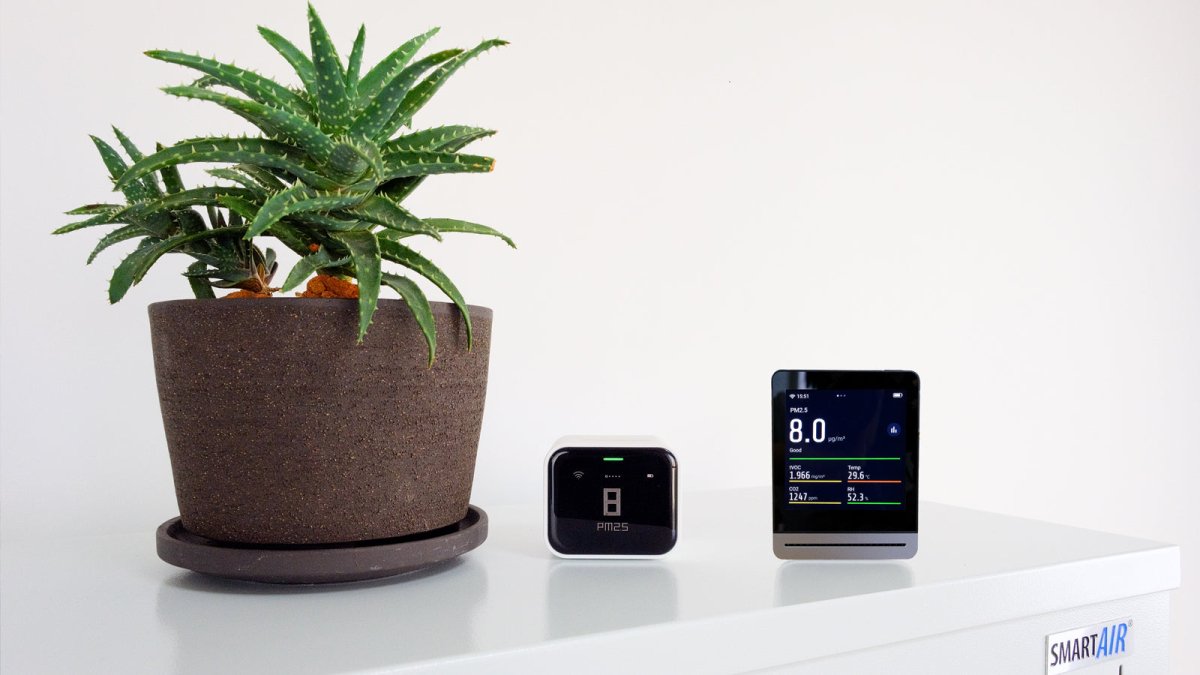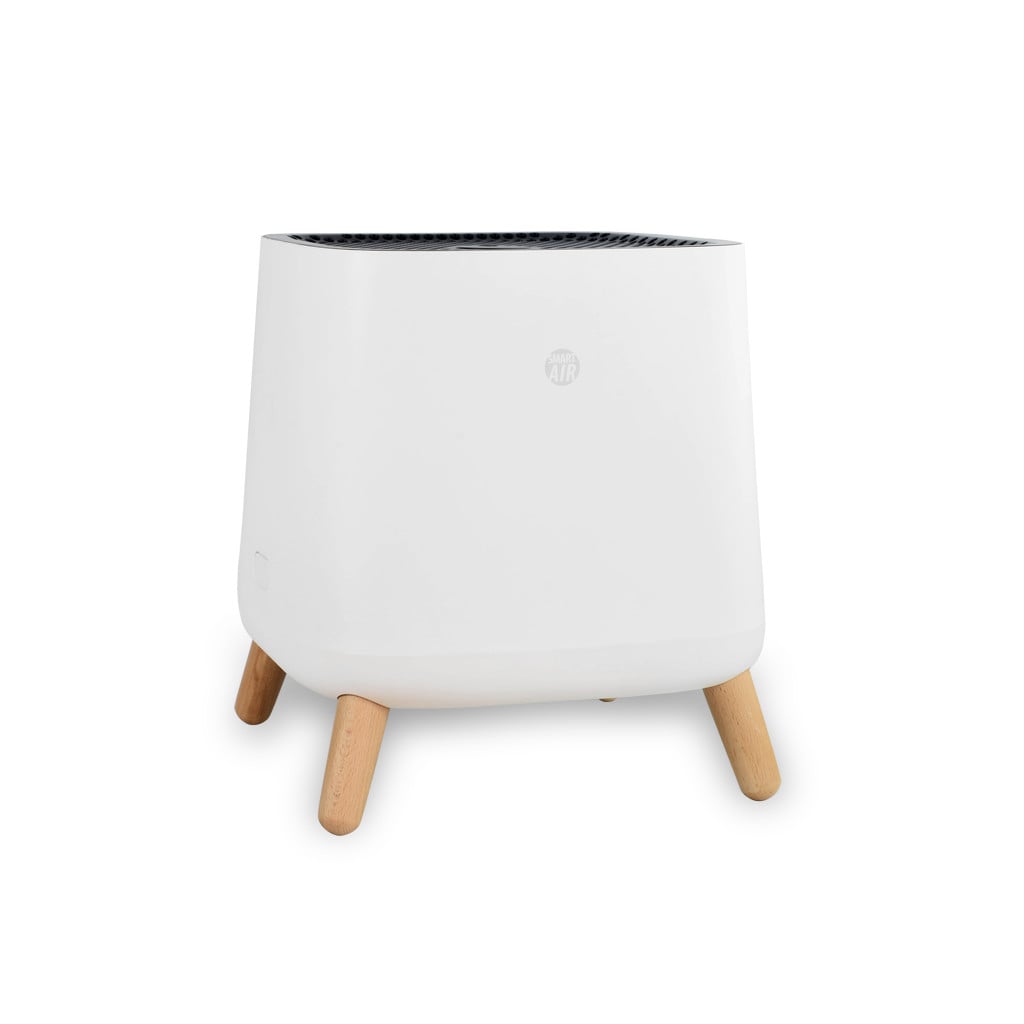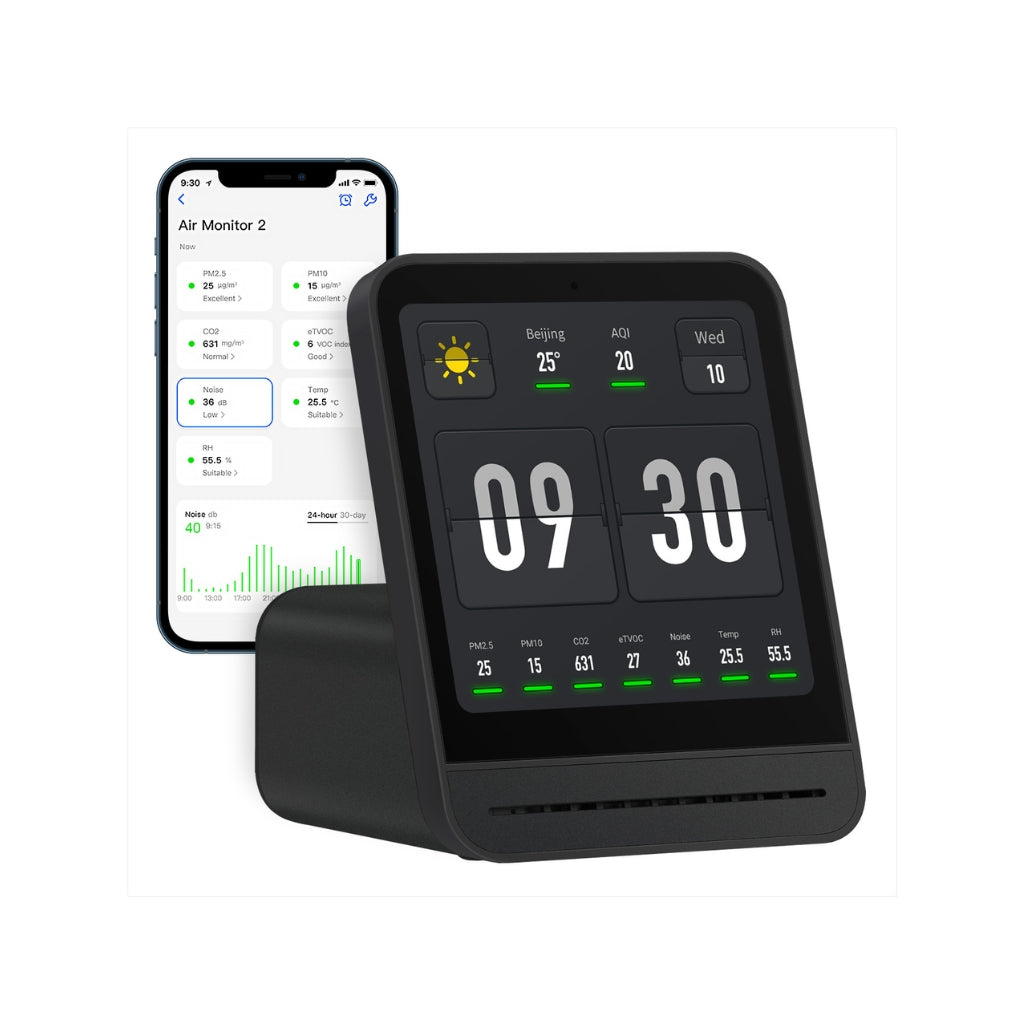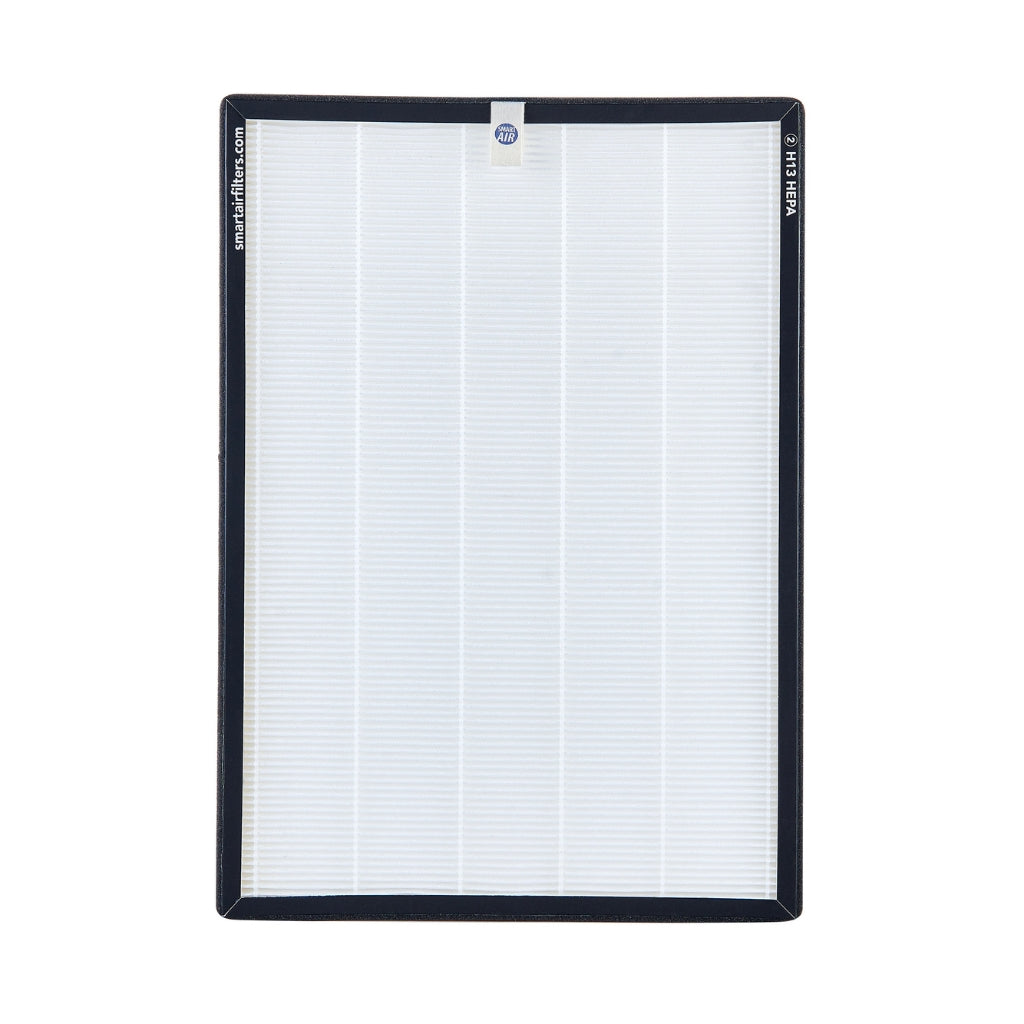Clean Air Blog

Clean Air Blog
Who Is Marvics? We Investigated the Suspicious “Top 5 NZ Air Purifiers” Ads
on Nov 13 2025
If you've been searching for Air Purifiers recently on Google here in New Zealand, you may have come across ads identifying the "Top 5 Air Purifiers in NZ" or "Top 5 Air Purifiers for Allergies in NZ" looking something like this:
Who's running this campaign?
Quickly, we notice it's from brands we've never heard of here, Hotselects and Trustyrates? Well, that's because it's an ad campaign run by a company in China, funneling people to buy their unknown air purifier:
Attempting to Sound Credible
If you go onto the websites, at first glance it appears legit. Run by someone called 'Evan Mitchell' who is apparently a seasoned air purifier reviewer. However a quick google turns up no information on him, and the picture looks AI generated. It's also a little strange he runs both websites, and his email address is matt@trustrates.com for one of them! The descriptions are also very clearly AI generated:
Now onto the content. It does include useful pointers on what to look for (HEPA filters, high CADR and avoiding ionisers. Okay, all fine with us - we'd agree these are all useful things for people to know when choosing an air purifier.
Now, who's the Surprise Winner?
Funny enough, the number one rated purifier on each site is one we've never heard of before! They aim to make it sound more legit by including comparisons to other well-known products such as the Dyson TP09 or the Levoit 600S. You can clearly tell it's designed to promote one specific product, as the winner is also the only one with a link to view the product!
Hotselects Winner: Marvics Air Purifier
Well, a very clear winner here. So many pros, and the only cons being that it's online only and frequently sold out due to high demand! Although it's not lost on us that it shows a Pro as being negative ion generation, yet just above it says to avoid ionisers. Almost sounds too good to be true...
Trustrates Winner: GLO Air Purifier
Another one we've never heard of. It includes all the same features and pros as the Marvics purifier, the same cons! Even the same picture...
Let's take a look at the product
Conveniently the Marvics is on sale for only $309, saving $260! Lucky we got in now before the sale ends in less than 10 hours. Although, when I looked a few weeks ago there was the exact same sale - must have been a coincidence. 7743 sold in total and only 3 left, boy they're putting the pressure on for you to buy now!
They've hit all the classic sales and trust cues. Raving reviews from Consumer Reports, CNET, Wired, Fox News. Heck, even the Cambridge Dictionary has reviewed them - must be really something special! Even more amazing, given it has a quoted Clean Air Delivery Rate (CADR) of 80m³/hour, which is one of the lowest of any purifier you can find.
Of course, if you try google these reviews you'll turn up a blank. Because Marvics/Glo has no presence anywhere else. It only exists in this eco-system, built by AI to funnel people to a seriously overpriced air purifier. Looks like they're doing this around the world, as their Trust Pilot page shows quite a few very unhappy customers...
Not Just Air Purifiers
As a bonus, they have a dehumidifer too which no doubt follows the same path. Here's how the deeply inspiring story at the bottom of each product compares!
Bottom Line
Be careful when searching online, and seek out trusted local suppliers and sources of information. If you really want the Best Air Purifier in New Zealand, we've got you covered with our range!

Clean Air Blog
The Best Air Purifiers in New Zealand: 2025 Comparison
on Aug 26 2025
This is our third year running this nationwide comparison, now updated for 2025. Over that time, we’ve seen plenty of air purifiers come and go - often from brands where air quality isn’t their main focus. Some even vanish entirely, leaving users without replacement filters.
That’s why we refresh this guide each year: to show which models are properly supported in New Zealand, how they actually perform, and which ones deliver the best value for clean air.
1. How We Compare Purifiers
We focus on the two figures that matter most: Clean Air Delivery Rate (CADR) and noise (dB).
💨CADR measures how much clean air a purifier produces each hour. The higher the number, the faster it cleans and the larger the space it can handle. We use this figure because manufacturer recommended room sizes are often inaccurate.
🎶Noise tells you how comfortable it is to live with. We use maximum noise levels for fair comparison, rather than the quiet “sleep-mode” numbers that hide reduced airflow.
As a guide:
<50 dB - relatively quiet for daytime use, fine in living areas but still very noticeable at night
50–54 dB - modest background noise, upper limit for comfortable indoor environments
55–59 dB - similar to normal conversation, very noticeable if close by
60+ dB - loud and disruptive, best avoided for long periods
Together, these two metrics give the clearest picture of real-world performance: how quickly a purifier cleans the air and how comfortably it does it.
2. Comparison Analysis (2025):
Our latest update shows a clear pattern: price doesn’t always equal performance.Some premium models look impressive but move surprisingly little air, while several affordable purifiers outperform nearly everything in their range.
Let’s start with the best air purifiers under $300 - where quiet, efficient performance matters.
3. Budget Air Purifiers Under $300 (for smaller spaces, up to ~40m²)
This category is aimed at bedrooms, nurseries, and smaller living areas/apartments. This is for those wanting quiet, effective air cleaning without spending a fortune.
We assessed 12 models from brands such as Breathing Better, Sunbeam, Breville, TruSens and more.
🏆 Best Overall: Smart Air Sqair
📊 Key Stats:
CADR: 315 m³/h (>50% higher than competitors)
Noise: 23–52dB (on low, whisper-quiet)
Room coverage: Cleans a 43 m² room in just 20 minutes
Price: $299.99
👍 Why we like it:
The Sqair delivers the most clean air for your dollar - more than any purifier under $300 in New Zealand. Its H12 HEPA filter has a large 1.5 m² surface area (around 22 A4 pages), giving excellent capture efficiency for smoke, dust, pollen, and pet dander.
It’s also 7–12dB quieter than its nearest rivals, making it ideal for bedrooms or nurseries where silence matters.
And because it relies purely on proven HEPA + Carbon filtration (no ionisers, no ozone), it’s a safe, science-based choice for households with respiratory concerns or young children.
🔍 How It Compares
Brand
Model
Max CADR
Max Noise
Price
Smart Air
The Sqair
315m³/hr
52dB
$299.99
Sunbeam
Fresh Protect*
193m³/hr*
59dB
$248.00
Trusens
Z2000
190m³/hr
64dB
$229.00
Breville
The Easy Connect
91m³/hr
60dB
$270.00
* This purifier includes an ioniser/plasma function. We generally recommend turning ionisers off, as they can produce unwanted byproducts - but switching them off may also reduce the purifier’s CADR, sometimes by a large margin. If you want a clear breakdown of how ionisers work (and why some brands use them), see our full guide →
Despite being similarly priced, most competitors clean 40–60 % less air and run significantly louder. The Sqair comfortably handles rooms up to 43 m², reaching that target in just 20 minutes - while others in this range top out around 26 m².
It’s a clear reminder that price doesn’t always equal performance.
Graph 1: Air purifiers under $300 in NZ (price vs max noise vs CADR).
4. Air Purifiers $300 to $500 in New Zealand (for medium spaces, up to ~60m²)
This range suits medium-sized living rooms, apartments, and shared spaces where you want strong air cleaning without excess noise.
We compared 14 models from brands like Daikin, Shark, Winix, Breville, Xiaomi, TruSens and more.
🏆 Best Overall: Smart Air SA600
📊 Key Stats:
CADR: 500 m³/h, equal to the highest in this bracket
Room coverage: Cleans a 60 m² room in just 18 minutes
Noise: 16 – 51dB (quietest in class)
Price: $439.99
👍 Why we like it:
The Smart Air SA600 packs big-room performance into a compact, low-noise design. Its dual-inlet setup and twin H13 HEPA + carbon filters deliver clean air more efficiently than purifiers twice its price. It matches the top CADR of the Xiaomi Pro 4 but runs up to 13dB quieter, making it much more comfortable for everyday use.
Unlike many competitors that rely on ionisers or plasma features, the SA600 uses straightforward science. That's a powerful fan and real filters for reliable, safe air cleaning. Add its “Do Not Disturb” mode to avoid lights and child lock, and you get a purifier built for homes, offices and schools alike.
🔍 How It Compares
Brand
Model
Max CADR
Max Noise
Price
Smart Air
SA600
500m³/hr
51dB
$439.99
Xiaomi
Pro 4 Smart Air*
500m³/hr*
64dB
$400.00
Xiaomi
4 Smart Air*
400m³/hr*
63dB
$325.00
Shark
NeverChage 5
165m³/hr
55dB
$350.00
* This purifier includes an ioniser/plasma function. We generally recommend turning ionisers off, as they can produce unwanted byproducts - but switching them off may also reduce the purifier’s CADR, sometimes by a large margin. If you want a clear breakdown of how ionisers work (and why some brands use them), see our full guide →
The SA600 offers a rare balance of high airflow and low noise, outperforming most competitors in both areas. It delivers top-tier cleaning power while remaining comfortable to live or work beside, even on full speed.
By contrast, the Shark NeverChange 5 is heavily marketed, but falls short in performance. With a CADR of just ~165 m³/h, it moves a third of the clean air of the SA600, yet operates at 55dB or more. The SA600 achieves almost the same airflow at only 16dB on low speed, virtually silent!
It’s a clear example of why transparent CADR data matters more than marketing labels, and why the SA600 stands out as the most capable and honest performer under $500.
Graph 2: Air Purifiers $300- $500 in NZ (Price vs max noise vs CADR).
5. Air Purifiers for larger spaces under $1000 in New Zealand (Up to ~85m²)
When you’re dealing with large living areas, classrooms, clinics, or open-plan apartments, you need serious airflow without the jet-engine noise.
We assessed 15 models in 2025 from brands like Sharp, Daikin, Oransi, Winix, Mitsubishi, Breville and Dyson. Performance varied dramatically - some delivered genuine whole-room cleaning, others struggled despite premium pricing.
🏆 Best Overall: Smart Air Blast Mini Mk II
📊 Key Stats:
CADR: 740 m³/h highest in its class
Room coverage: Cleans 85 m² in just 17 minutes
Noise: 49dB max, quietest among large-space units
Price: $799.99
👍 Why we like it:
The Blast Mini Mk II is built for genuinely big rooms. Its massive airflow and large H13 HEPA + optional carbon filter give it the power to handle living rooms, classrooms, or open offices with ease, all while staying impressively quiet.
At just 49dB on high, it’s quieter than many smaller purifiers running on medium. Smart Air’s “fan + filter, no gimmicks” approach means there are no ionisers, plasma emitters, or inflated “air quality modes” - just straightforward, high-volume HEPA filtration that works.
🔍 How It Compares
Brand
Model
Max CADR
Max Noise
Price
Smart Air
Blast Mini Mk II
740m³/hr
49dB
$799.99
Oransi
Mod Hepa
574m³/hr
49dB
$850.00
Mitsubishi
ElitePure
508m³/hr
55dB
$520.00
Dyson
Pure Hot+Cool HP03
113m³/hr
62dB
$899.00
The Blast Mini Mk II delivers both the highest CADR and lowest noise in its category, making it a standout for large spaces.
The Oransi Mod HEPA is a solid performer but still trails well behind in airflow. Meanwhile, Mitsubishi’s ElitePure offers less than 70 % of the Blast Mini’s output, and Dyson’s HP03 barely registers for its price tag.
Dyson’s independently tested CADR of just 113 m³/h, and at a noisy 62dB, shows how marketing can mask poor real-world performance. The Blast Mini, by contrast, backs its claims with transparent data and measurable results.
Graph 3: Air purifiers $500 - $999 in New Zealand (price vs max noise vs CADR).
6. Large & Commercial Air Purifiers over $1000 in New Zealand (Up to ~130m²)
This category covers large homes, gyms, clinics, classrooms, and shared spaces - anywhere serious clean-air output is needed.
We tested 15 models from brands such as IQAir, Trusens, Dyson, Breathing Better and Fellowes. Prices vary widely, and as with smaller categories, cost doesn’t always equal performance or quietness.
🏆 Best Overall: Smart Air Blast Mk II
📊 Key Stats:
CADR: 950 m³/h, highest in New Zealand
Room coverage: Cleans 130 m² in 21 minutes
Noise: Just 43 dB, the quietest large unit around
Price: $1,100
👍 Why we like it:
The Blast Mk II delivers industrial-level performance in a package that’s surprisingly quiet.At 950 m³/h CADR, it outperforms or matches high-end purifiers costing several times more - while running at only 43 dB, about the sound of a quiet conversation.
It’s built around Smart Air’s no-nonsense principle: massive HEPA surface area, high airflow, and zero gimmicks
With H13 HEPA and optional carbon filtration, it’s ideal for schools, fitness studios, or any environment where dependable, high-volume clean air is needed without the distraction of fan noise.
🔍 How It Compares
Brand
Model
Max CADR
Max Noise
Price
Smart Air
Blast Mk II
950m³/hr
43dB
$1100
Trusens
Z7000
930m³/hr
66dB
$1830
Trusens
Z6000
880m³/hr
63dB
$1700
IQAir
CleanZone SL
820m³/hr
56dB
$11,500
Breathing Better*
X-Large Room Purifier*
800m³/hr
70dB
$1499
I-Air
Pro Air Healer
600m³/hr
61dB
$12,883
Dyson
Purifier Hot + Cool
311m³/hr
62dB
$1099
* This purifier includes an ioniser/plasma function. We generally recommend turning ionisers off, as they can produce unwanted byproducts - but switching them off may also reduce the purifier’s CADR, sometimes by a large margin. If you want a clear breakdown of how ionisers work (and why some brands use them), see our full guide →
The Smart Air Blast Mk II pairs immense airflow with unmatched quietness, achieving what most large-space purifiers can’t: power and comfort in the same package.
The Trusens Z7000 comes close in airflow but runs over 20 dB louder, while the IQAir focuses on the high end with specialised carbon filtration and an big price tags.
At the opposite end, Dyson’s premium Hot + Cool series delivers less than a third of the airflow at very high noise levels - proof that sleek design doesn’t equal clean air.
Graph 4: Air Purifiers $1000+ in New Zealand (price vs max noise vs CADR).
7. Summary: What We Learned From the Comparisons
After analysing nearly every purifier available in New Zealand, one trend is clear: the best-performing units aren’t always the most expensive.
Across all categories, CADR and noise tell the real story. Some premium models look sleek but move little air, while smaller specialist brands often deliver far higher performance for their price.
The purifiers that consistently stand out combine:
High CADR – lots of clean air, fast
Low noise – quiet enough for daily use
Reliable filter support – parts readily available in NZ
8. How We Source and Verify the Data
We’ve made every effort to ensure the numbers here are accurate and up to date, but air purifier data can be patchy. Some brands don’t publish CADR or noise levels at all (we’re looking at you Dyson and Shark), or publish only partial figures.
Here’s the approach we use, for all purifiers we find available in New Zealand:
Manufacturer or retailer specs - when CADR and noise levels are published clearly.
EnergyStar database - where CADR is independently verified.
Independent tester reviews (e.g. Housefresh, Rtings) when official data isn’t available.
If no reliable CADR data can be found, we exclude the model.
That’s why this guide shows every purifier in NZ with verifiable performance data. While we’ve double-checked everything, there may still be small differences between sources.
9. Why Can You Trust This guide?
The internet is full of “Top 10 Air Purifiers” and “Best Purifiers for Dust” lists - even from well-known outlets. Unfortunately, many are built to generate commission, not to give you the best advice.
We want to be upfront: yes, we are selling some of the purifiers in this guide. But unlike affiliate-driven lists, our business depends on you being satisfied years down the track. That means filters being available, performance matching the claims, and you getting genuine value. That's why we aren't just telling you which are the best, we're showing you the data so you can make an informed decision.
10. Why you can’t trust every “Best Of” list
To show what we mean: in 2024, the NZ Herald published their “Best Air Purifiers in New Zealand” picks. The problems? Many. It was clear this was written by someone (or AI) with no knowledge of air purifiers. They included models with poor clean air performance, no filters available and unsupported models drop shipped from overseas. Their reason for publishing isn’t to inform you, it’s to earn commission on the products they list.
We broke this down in detail here:
It's a good reminder that while these lists look authoritative, they don't hold up when you check the numbers.
Our aim is different: to compare all models where data exists, show how they stack up, and make it transparent why certain units come out ahead.
11. Features That Don't Add Real Value
When shopping around you’ll see lots of air purifiers with added bells and whistles. Some of these aren’t just unnecessary, they can be unhelpful or even harmful:
Ionisers / Negative ion generators - can create ozone and just push particles onto surfaces instead of removing them. These are used to improve CADR figures, without filtering out particulates.
UV lights - sound impressive, but don’t get enough contact time to work in fast-moving air. HEPA filters already capture these particles.
Auto sensors - often cheap, inaccurate and misleading. We recommend a separate, accurate monitor if you want to track your indoor air properly.
👉 For a full breakdown, see our article: What features matter when choosing an air purifier.
12. Final Thoughts
This guide compares nearly every purifier currently sold in New Zealand, from compact bedroom models to large commercial systems.
Whatever your space, the same principles apply:
Focus on CADR and noise, not gimmicks
Make sure filters are available locally
Choose a model that matches your room size and how you’ll use it
👉 Still not sure which model fits your space? Take our 60-second quiz or browse our full range to find the best value purifiers available in New Zealand today.

Clean Air Blog
The Best Indoor Air Quality Monitors in NZ: Qingping Pro and Lite
on Aug 24 2023
Note: The QP Pro has now been replaced by the QP Pro 2 - the same trusted accuracy, in an even better package!
Air quality is an often overlooked yet important aspect of our daily lives, especially given that most of us spend the bulk of our time indoors. How do you measure and ensure the cleanliness of the air you breathe? Even in New Zealand, clean air is not always a given.
Enter: indoor air quality monitors. In today's article, we'll delve deep into two standout models – the QP Pro and QP Lite.
Why You Should Care About Indoor Air Quality
Understanding the quality of the air within your living spaces is essential. Poor indoor air quality can lead to headaches, tiredness, and even respiratory problems. While we may consider ourselves an outdoorsy nation, the reality is we spend a significant amount of time indoors. Given this, it's important to ensure our air is clean and healthy for ourselves and loved ones.
Poor indoor air quality doesn't just mean a bad smell; it poses real health concerns. Factors like poor ventilation, gas stoves, fireplaces, and even outdoor pollutants like pollen and dust can compromise the air we breathe indoors.
Curious about the broader implications of air quality and its importance, especially in the New Zealand context? Dive deep into our guide on air quality to understand this topic in more detail.
The Need for an Air Quality Monitor
As mentioned in our guide on the Importance of Owning an Air Quality Monitor, these devices allow us to gauge indoor air quality, allowing you to take corrective actions when necessary. Air quality monitors measure the concentration of pollutants like volatile organic compounds (VOCs), carbon dioxide, and particulate matter.
The true value of air quality monitoring lies in the peace of mind it provides. Assuring you that you're breathing clean air, and avoiding potential health issues down the road. Moreover, when paired with an air purifier, an air quality monitor offers a comprehensive solution for to both monitor and clean your air.
Understanding Key Pollutants: Particulate Matter, tVOC, and CO2
Particulate Matter (PM): These are tiny particles suspended in the air, and their potential health effects depend on their size. PM2.5 and PM10, for instance, refer to particulate matter with diameters of 2.5 micrometers and 10 micrometers, respectively. They can penetrate deep into the lungs and even enter the bloodstream, posing health risks.
Total Volatile Organic Compounds (tVOCs): VOCs are organic chemicals that become vapors or gases at room temperature. They are emitted from certain solids or liquids, including paints, cleaning supplies, and even some air fresheners. High concentrations can lead to eye, nose, and throat irritation, headaches, and more.
Carbon Dioxide (CO2): A natural component of the air, elevated indoor CO2 levels can indicate poor ventilation. While not directly harmful in usual indoor concentrations, high levels can cause headaches, dizziness, shortness of breath, and impaired cognition.
Comparing the QP Pro and QP Lite
While the choices in New Zealand for indoor air quality monitors are limited, luckily we have the QP Pro and QP Lite which are some of the most accurate air quality monitors in the world!
QP Lite: A portable and lightweight monitor, it measures PM2.5, PM10, CO2, temperature, and humidity. It stands out for its long battery life and remote monitoring capabilities via the Qingping+ app. It also integrates seamlessly with Apple HomeKit or Mi home/Mijia for smart home automation.
QP Pro: More than just a monitor, the Pro offers an HD Retina display and tracks a wider range of metrics, including tVOCs. It also provides outdoor environment data like weather forecasts, AQI, and UV index. Like its Lite counterpart, the Pro connects to Mi home/Mijia and offers remote monitoring via the Qingping+ app.
Accuracy Matters: Outstanding Test Results
Both QP models come backed by Smart Air’s third-party tests, emphasising their reliability. Tests by Smart Air found the QP Pro and Lite to be impressively accurate for their budget-friendly price. In extensive testing, the QP Pro deviated by only 7.9 micrograms on average from official monitors, while the QP Lite was off by just 8.9 micrograms.
Further validation comes from independent third-party tests conducted by the South Coast AQMD, part of the California Government's testing program. Both QP models earned a top 10 spot among 82 monitors tested, with accuracy rates reaching a remarkable 97%.
Final Thoughts
Considering the importance of indoor air quality, having a reliable and accurate monitor becomes an important investment for New Zealanders. The QP Pro and Lite are not only affordable but are also backed by robust testing, ensuring that we get accurate readings to make informed decisions about our indoor environments.
Interested in enhancing your home's air quality? Explore our QP Air Quality Monitors and embark on a journey toward a healthier indoor environment. Stay informed, and breathe easy.



























